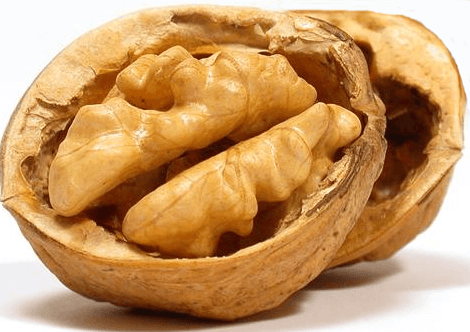WALNUT OIL IN PAINTING
Today, oil paint is often made with linseed oil. Linseed oil dries relatively fast, creates a good film, and has a solid history of use – the problem is, linseed oil yellows over time. Historically, walnut oil was widely accepted and used by many artists. It yellows far less than linseed oil, creates a great film, and now approaches linseed oil in afford-ability.
While walnut oil was known to the Egyptians, in the fifth century. A Greek medical writer known as Aetius wrote about the use of walnut oil for gilding and encaustics. He mentions linseed oil, but writes about walnut oil as if it were preferred for the arts.
In Codex Atlanticus, Leonardo da Vinci discusses the process of pressing walnut oil for painting. He is concerned that if the skin of a walnut is left on during the pressing, it can discolor the oil, making it less useful for paint. He describes a process of extraction where nuts are put in a thick wool bag woven like the saddle-girth of a mule. The press was actually a horse-drawn mechanism.
The first art historian, Guiorgio Vasari describes how an artist is to “grind the colours with the walnut or linseed oil, though walnut oil is better”. From 1600 and during his 9 year stay in Italy, Rubens studied the Italian mediums and made his own improvements. Rubens used walnut oil in his process of grinding mineral pigments.
Vermeer’s use of walnut oil is well documented. He sometimes uses linseed oil in his darker passages, where yellowing is not a problem, but stays with walnut oil for his lighter colours.
Other artists who used walnut oil include Van Eyck, Van Dyke, Raphael, Borghini, Armenini, Lomazzo, Volpano, Bisago, etc. Rembrandt is credited with using a thickened walnut oil and sometimes a resin to enhance the flow of the paint.
Walnut oil is often used in lighter passages of a painting because it yellows less. Sometimes artists will use linseed oil in darker passages because the yellowing is not so visible. However, very frequently artists mix darker colours in a painting with white or lighter colours, in order to create a palette with a range of hues. In this case, the linseed oil in darker colours would certainly become part of the lighter colours. Further, very often the darker colours are faster drying, as is the case with umbers, siennas, and all iron oxides including the modern pigments. Given these factors, the use of walnut oil in both dark and light colours seems to have a logical advantage for the long term quality of the painting.
The important qualities of a binding oil for paint can be understood by looking at the content of fatty acids in the oil. Most importantly, drying oils contain linolenic, linoleic, and oleic acid – as well as palmitic and stearic acid. Linolenic acid is the key to drying and oxidation, but is also responsible for yellowing. Linoleic acid helps to create a tough film for the paint. Oleic acid helps reduce cracking. The following chart shows the general relative content of these fatty acids…
| OIL | LINOLENIC | LINOLEIC | OLEIC |
| Walnut | 12% | 60% | 17% |
| Linseed | 38% | 42% | 14% |
Research may show varying content of Linoleic acid for Linseed oil, but this chart gives a rough estimation. The point is, the balance of linoleic and linolenic acid in walnut oil will result in a very solid film that yellows less, and will probably crack less than linseed oil.
Walnut oil is more affordable now than it was after World War II, when it became almost impossible to find in art stores. It yellows less than linseed oil, but takes longer to dry – not as long as other oils such as poppyseed – and walnut oil resembles poppyseed oil in its capacity to absorb more pigment due to the fact it is less viscous than linseed oil. Given that artists often mix lighter colours with darker colours, it makes sense to create the darker colours with walnut oil as well. Walnut oil is an outstanding material for making colours – available to the old masters – and now available to the new masters!




